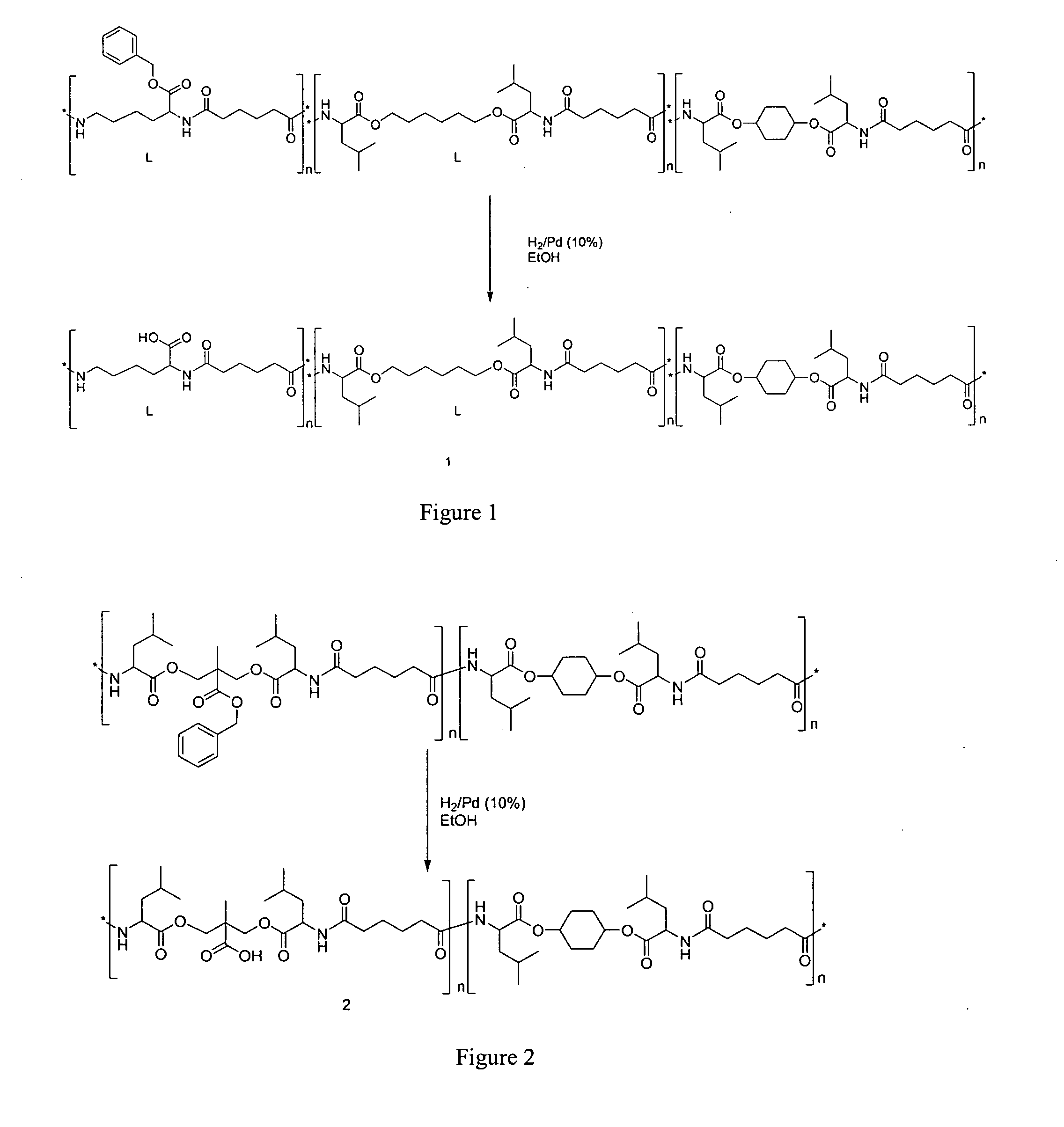Polyester amide copolymers having free carboxylic acid pendant groups
a technology of polymer amide and pendant group, which is applied in the field of ester amide copolymers, can solve the problems of tunable degradation rate of polymer, half-life time of hydrolysis, etc., and achieve the effects of short hydrolysis half-life time, tunable degradation rate, and mass transpor
- Summary
- Abstract
- Description
- Claims
- Application Information
AI Technical Summary
Benefits of technology
Problems solved by technology
Method used
Image
Examples
example 1
Synthesis of New PEA Polymers
[0101]A typical example of the new PEA (1) as designed for a drug-delivery coating described herein is shown in FIG. 1, which shows the deprotection step in its synthetic route, where the free acid is generated from a benzyl ester protected lysine. The acid containing monomer can be incorporated at any amount.
[0102]An alternative design is through the use of benzyl ester protected bis-methylol propionic acid (bis-MPA) as a spacer between two amino acids, which are subsequently deprotected to generate the desired type of polymers 2 (FIG. 2).
[0103]In FIGS. 1 and 2, the n numbers are independent integers and can be 1 to about 100,000, e.g., from about 5 to about 50,000, from about 10 to about 10,000, from about 100 to about 5,000, from about 500 to about 2,000 or about 1,000.
[0104]The above mentioned polymers could be made with any spacer lengths (diols, diacids) as well as from any type of amino acids. Alternatively, the polymers could also comprise oligoe...
PUM
| Property | Measurement | Unit |
|---|---|---|
| temperature | aaaaa | aaaaa |
| bioactive | aaaaa | aaaaa |
| biocompatible | aaaaa | aaaaa |
Abstract
Description
Claims
Application Information
 Login to View More
Login to View More - R&D
- Intellectual Property
- Life Sciences
- Materials
- Tech Scout
- Unparalleled Data Quality
- Higher Quality Content
- 60% Fewer Hallucinations
Browse by: Latest US Patents, China's latest patents, Technical Efficacy Thesaurus, Application Domain, Technology Topic, Popular Technical Reports.
© 2025 PatSnap. All rights reserved.Legal|Privacy policy|Modern Slavery Act Transparency Statement|Sitemap|About US| Contact US: help@patsnap.com



